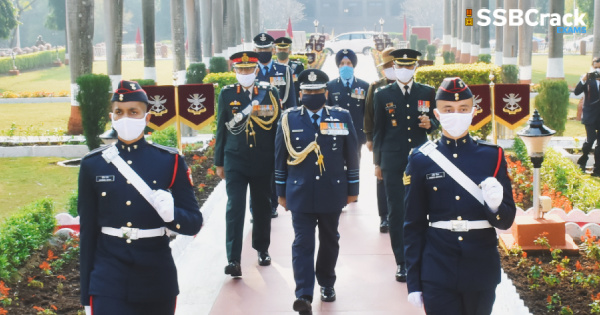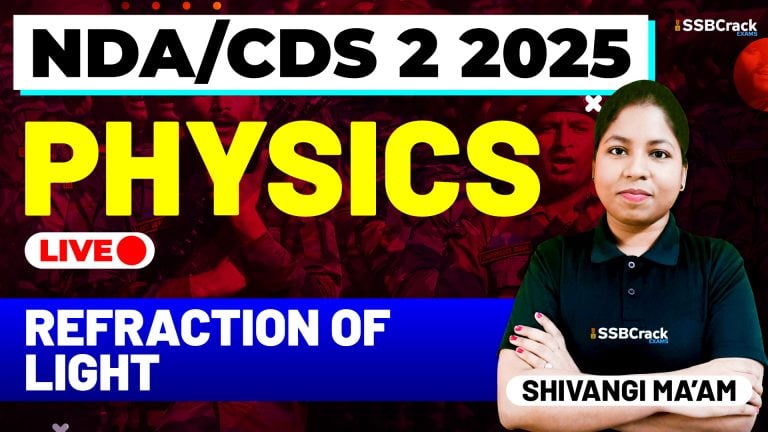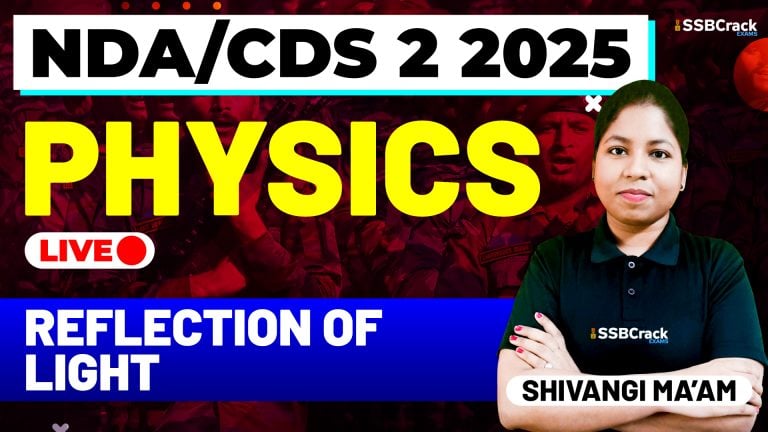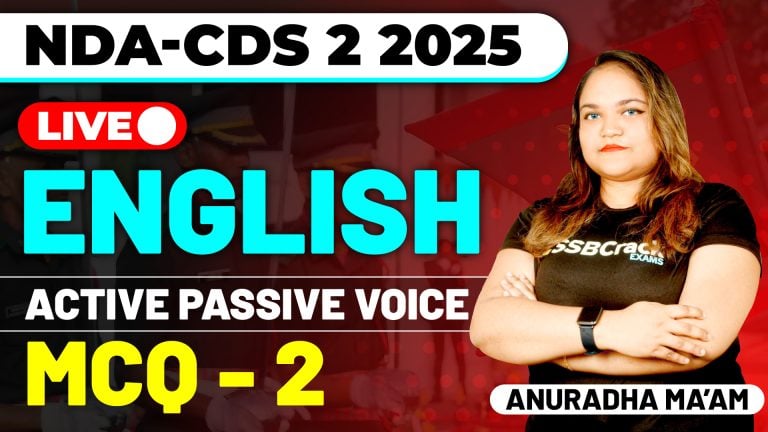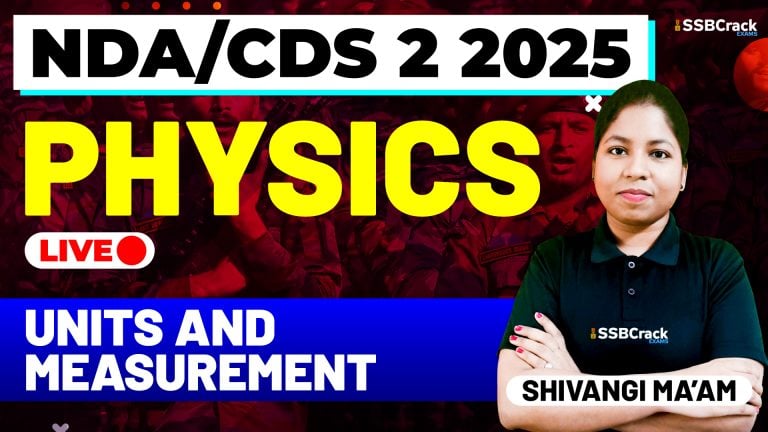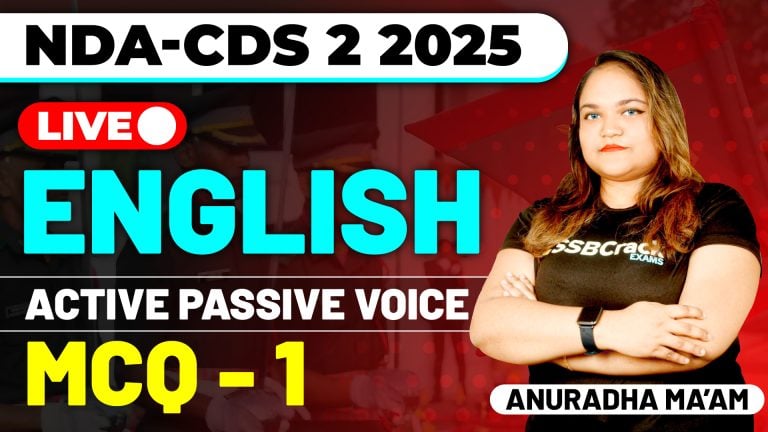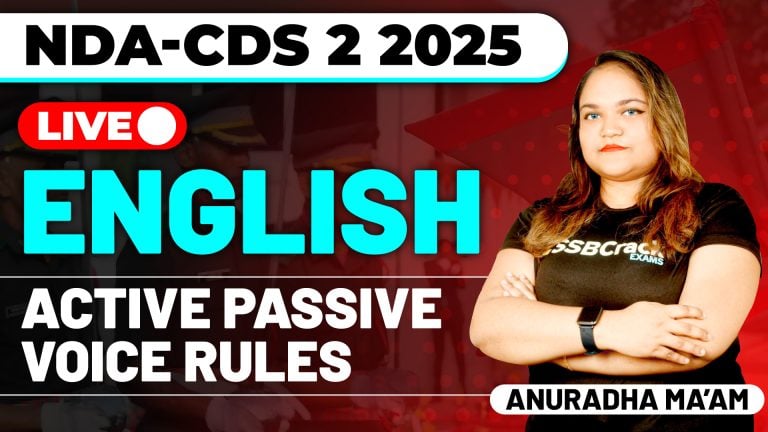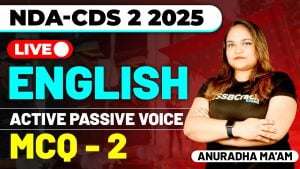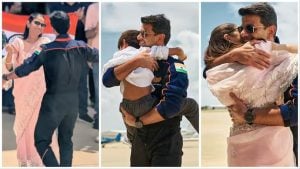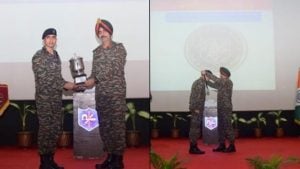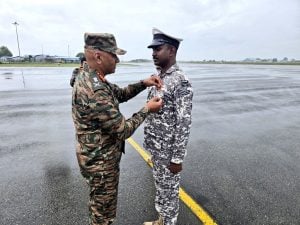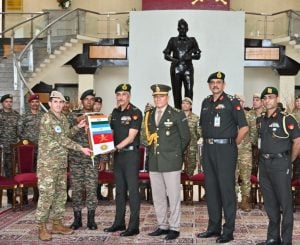National Defence Academy is a premier joint training institution and center of excellence for grooming junior leaders for the Indian armed forces and armed forces of Friendly Foreign Countries. The training entails equipping the cadets with mental, moral and physical attributes required to cope with the challenges of the future battle field with the aim of leading troops to victory in conventional, non-conventional and asymmetrical conflicts.
The syllabi encompass science, technology, arts and military subjects. The three-year course is split into six terms. A cadet is awarded a Bachelor’s Degree from the Jawaharlal Nehru University. The regimen consists of physical conditioning which includes drill, swimming, horse riding, full gamut of games and adventure activities. In three years at the Academy, he is transformed from a Cadet into a potential Officer and a gentleman.
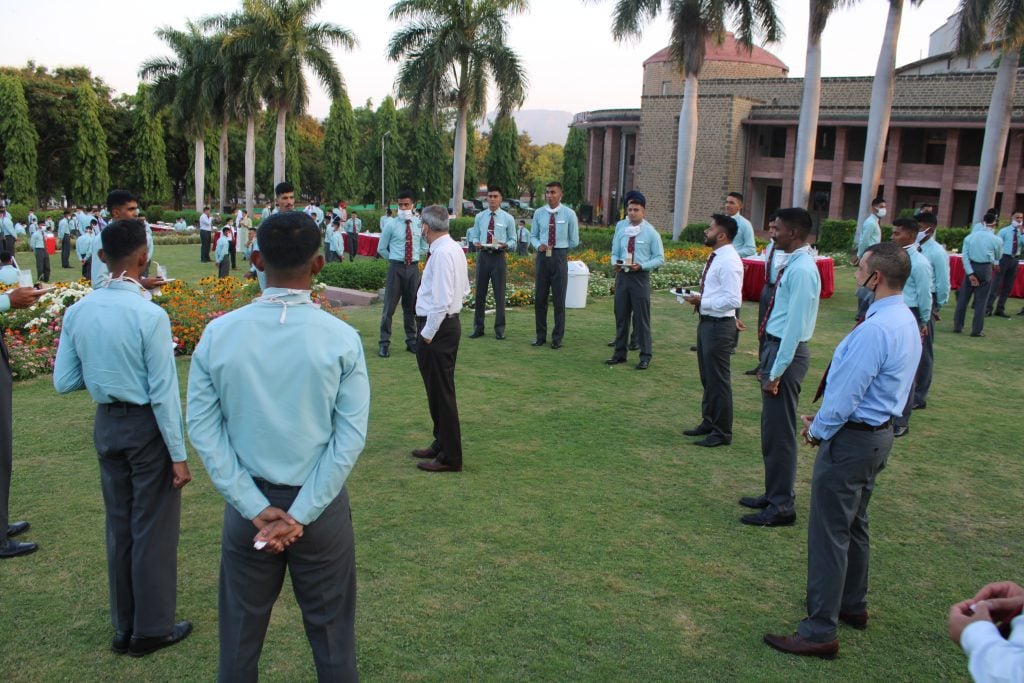
On successful completion of the three-year course, Army cadets proceed to Indian Military Academy at Dehradun, Naval cadets to Indian Naval Academy at Ezhimala and Air Force cadets to the Air Force Academy at Hyderabad. After completion of one year of training at their respective academies, they are commissioned as Officers into respective services.
How to prepare for the NDA Exam?
- Take the best NDA Exam Online Course by SSBCrackExams.
- Take the NDA Exam Mock Test Series to boost your prep.
- To Crack SSB Interview ENROLL NOW: SSB INTERVIEW ONLINE COURSE
Training Objectives
- To provide academic training of the highest quality in order to equip cadets with appropriate qualification as a foundation for their service careers.
- To carry out focused training to enable cadets to achieve the requisite physical standards, with proficiency in troop games.
- To inculcate in cadets qualities of leadership, a desire for self improvement and a drive to excel in every sphere.
- Incorporate culture of jointmanship in training and to promote the spirit of jointmanship in thought, word and deed.
- Conduct high quality service training to enable cadets to have a substantial edge over their counterparts during their service careers.
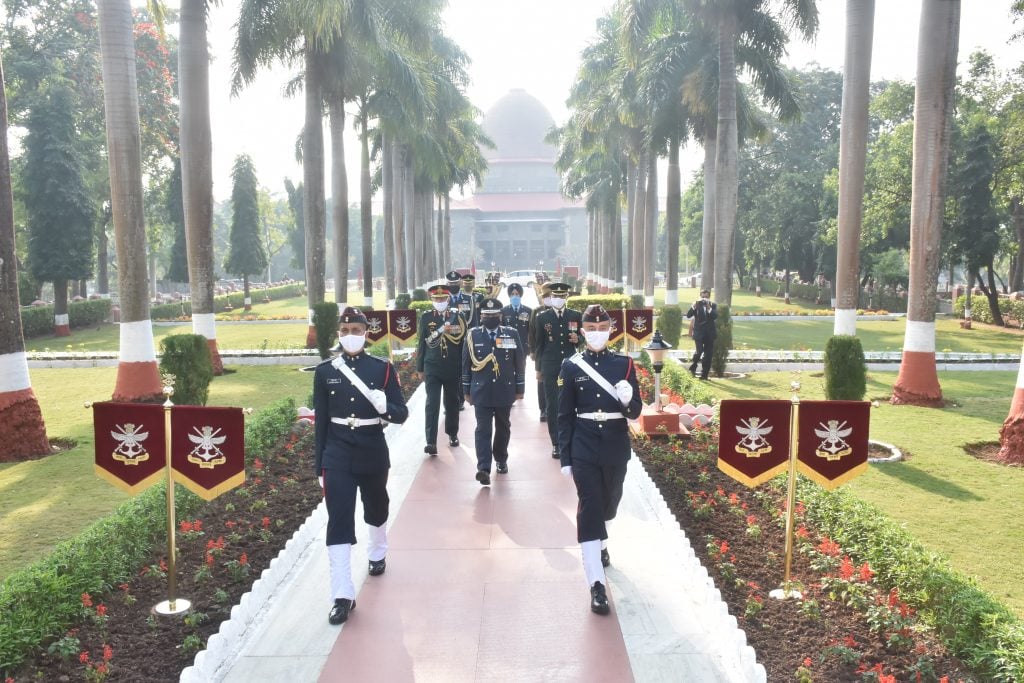
- Hone the communication skills of Cadets to articulate their thoughts coherently, concisely and clearly both in speech and writing.
- Emphasize on overall personality development of a Cadet by inculcating a sense of self-discipline, honour, integrity, camaraderie and spirit de corps.
- Strive towards enhancement of infrastructure and networking of the Academy in accordance with the infrastructure development of NDA.
- Improve and upgrade the quality of life of all personnel in the campus and to foster an environment of spirited and happy team NDA.
- Continue the drive towards conserving and preserving the environment, flora and fauna to make NDA plastic free, green campus with zero carbon footprints.
Academics
- Academic training formed an integral part of the NDA curricula since its inception. Mr. JTM Gibson, the first Principal, was instrumental in establishing and implementing academic training at the Inter Services Wing in the true pioneering spirit, against daunting odds. The National War Academy Syllabus and Establishment Committee (Jha Committee II) chaired by Dr. Amarnath Jha, drew up a two year course syllabus for the ISW in 1948, fixing the ratio of Academic subjects to Service subjects as 2:1. This syllabus was recognized as equivalent to Intermediate Science by a majority of Indian Universities.
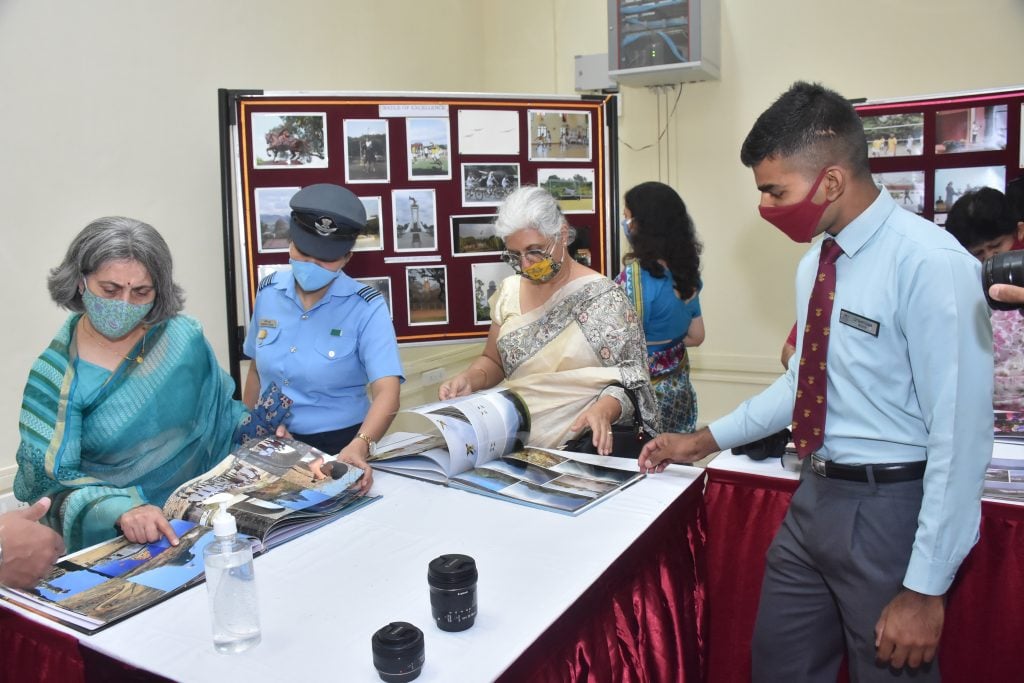
- The syllabus underwent modifications and amendments from time to time incorporating current trends and requirements. The syllabus in vogue in 1961 was comparable to that which was prevalent in Indian Universities. However, the coveted academic milestone was achieved through concerted efforts only in August 1973, when the NDA was finally degree linked and affiliated to the prestigious Jawaharlal Nehru University, New Delhi. The 46th course achieved the unique distinction of being the first Graduate Course to pass out of NDA on 07 June 1974.
- The teaching of computer fundamentals to cadets was introduced as early as 1987. As early as the 1980s, the growing impact of computers on Armament and Warfare could be visualized in the shape of things to come. The ground realities of the Gulf War only served to underscore the inevitability, indispensability and effectiveness of Information Technology with regard to war. Computer education at the Academy finally came of age when the first batch of twenty-five cadets of Ninety-Seventh course graduated with a B Sc degree in Computer Science in Dec 1999. Based on their academic profile and performance in the classification test, a cadet has the option of joining either the Science or the Humanities stream.The cadets at NDA undergo a three year training programme at the end of which they are awarded a BA or BSc or BSc (Computer Science) degree by the JNU.
- Meanwhile, the syllabus saw several revisions, significantly, one by the Mahajani Committee in 1969 and another by the Committee for the Review of the Training of Officers of the three Services (CORTOS) in 1986. The aim was to update the training of cadets so as to keep pace with the changing world. The present syllabus at NDA is the result of periodic reviews by two Committees, namely, the Inter-Services Study Group (ISSG) and the Academic Study Group (ASG) constituted by the Chiefs of Staff Committee on 2004, 2013 and 2017 so far.
- After a hiatus of more than four decades the enhancement of Academic threshold has taken a quantum leap forward with the introduction of B Tech programme wef Jun 16. NDA will impart education for the first three years of B Tech curriculum and the final year will be covered in INA (for naval cadets) and AFA/AFTC (for Air Force cadets). The programme has commenced as per the directions of the Chiefs of Staff Committee. This would ensure that NDA would now be able to train the future officer corps of the Indian Armed forces so as to be technically competent to exploit the modern battle field technology in a the most optimal manner.
- NDA has commenced the B Tech degree programme in Applied Electronics & Communication as the fourth stream for Navy cadets wef Autumn Term 16 and for Air Force cadets wef Spring Term 17. The Institute of Engineering and Technology (IET), NDA under Education Branch conducts the B Tech degree in the stream of Applied Electronics and Communication (AEC) for Naval and Air Force cadets. Institute of Engineering and Technology (IET), NDA is recognized by the AICTE (ALL India Council for Technical Education) and is affiliated to Jawaharlal Nehru University, New Delhi.
- The ISSG in 2017 reviewed the syllabi of BA / BSc / BSc (Computer Science) for Army cadets as a part of enhancement of academic curriculum and qualification of NDA cadets. The new academic curricula constituted three categories – the Compulsory/Core subjects, Joint Service Training Programme, Service Oriented subjects and Cross Stream subjects. The Compulsory/Core subjects comprising English, Foreign Languages/Hindi, Physics, Chemistry, Mathematics, Computer Science, History, Political Science, Economics and Geography, Basic Engineering has been completely revamped. Cadets of the Science and Humanities streams study their respective compulsory subjects. Foundation Courses are covered under Joint Services Training Programme during I to IV semesters and Army specific subjects as a part of Service Oriented subjects are covered during V and VI semester.
- Cross Stream subjects include Physics, Chemistry and Mathematics for BA degree cadets and Geography, History, Political Science and Economics for BSc and BSc (Comp Science) degree. Computer Science (Appreciation) is also taught to cadets pursuing BA and BSc degree. As far as Foreign Languages were concerned, ISSG recommended that Arabic, Chinese, French and Russian be retained and that Foreign Languages be taught only to cadets who are proficient in both Hindi and English. Further based on the recommendations of ISSG, the foreign languages/Hindi are covered during I to III semesters in alignment with the B Tech degree syllabi to provide jointmanship among cadets pursuing BA/BSc degree and B Tech degree.
- The Education Branch is responsible for conduct of all activities related to academic training of cadets which constitutes 57% of the structured training curriculum till lunch time. The Principal is the Head of the Education Branch. He is assisted by the Vice Principal, Registrar and General Staff Officer Grade – I for planning, conduct and monitoring of all aspects pertaining to the degree courses. Further, the Education Branch is organized into five faculties – Faculty of Sciences, Faculty of Computational Sciences, Faculty of Technology, Faculty of Social Sciences and Faculty of Languages. The faculties are led by Heads of Faculty assisted by a team of Professors,Associate Professor and Assistant Professors.
- Academic excellence is a prerequisite for continued trainability. Academic instruction at the NDA is imparted by qualified and highly motivated Civilian and Service Instructors. The curriculum is well rounded, but demanding. It is supported by up-to-date libraries and laboratories. The aim is to achieve excellence in academic pursuits without compromising on outdoor activities.
- The 21st century is a knowledge century; NDA Education Branch has always promoted technology oriented, innovative learning processes, to hone the skills of cadets, develop their spirit of enquiry, logical reasoning and lateral thinking. The objective is to sharpen their analytical abilities and make them capable of taking well informed decisions. This takes into consideration the need to develop their personalities as ‘Soldier-Scholars’, emerging as confident leaders not only contributing to National Security, but also to the overall development of our Nation. Recent innovation includes the renovation of Vyas Library, construction of new academic block (Raman Block) for conduct of B Tech degree, modernization of practical laboratories, access of e-learning study materials for cadets using e-tabs, Smart Class Room concept built upon Interactive audio/video based screens and access to e-resources through NKN (National Knowledge Network – as a part of Digital India) for effective teaching-learning.
Service Training
Army Training Team
GUTS & GLORY: [DONNING THE OLIVE GREEN]
Training is light and lack of training is darkness. A trained man is worth three untrained; that’s too little, say six; six is too little, say ten to one. “Alexander Suvorov”
There is no denying the fact that soldiering is the oldest and most respected profession of mankind where the victor re-writes history and joins the lanes of Gods. Whether it has been Lord Rama’s army crossing the unfathomable and gargantuan sea during ancient times or Abhimanyu breaking the Chakravyuh in the Mahabharata or a blitzkrieg through Ardennes 70 years ago or the shock and awe of recent wars, the importance of occupation of land by ground forces has not lost its essence. Even in present day modernised battlefield, it is only the basic military skills which become the deciding factor in the final outcome of a battle.
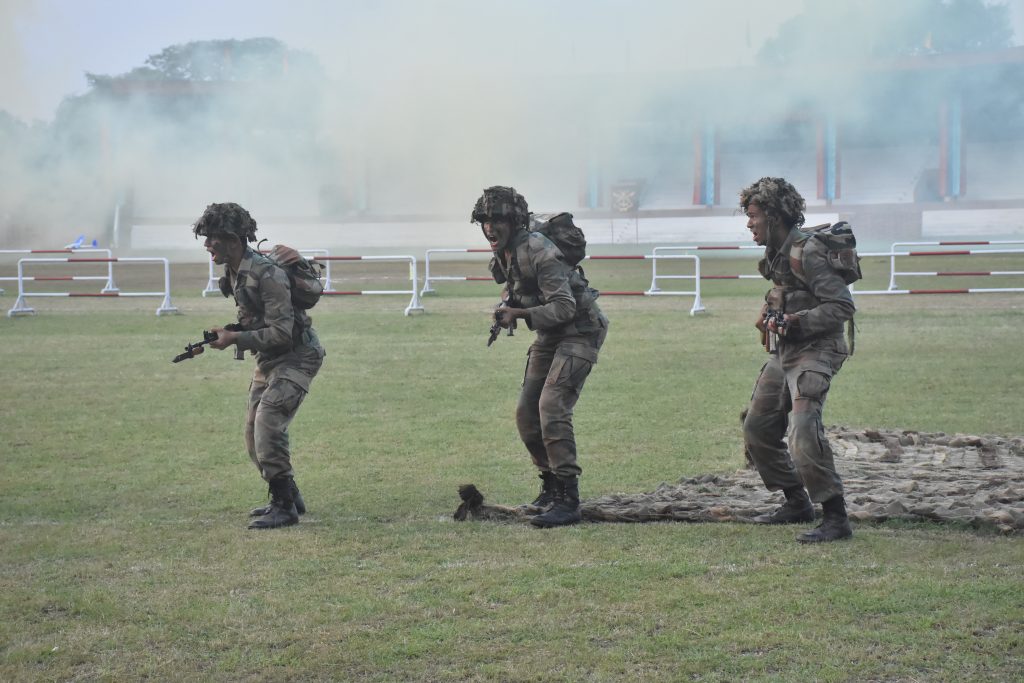
The Army Training Team at NDA trains the cadets to be proficient in basic soldiering skills to lead a section as part of a platoon in combat. Here in, endeavour is made to imbibe into a cadet a plethora of qualities which makes the bed rock for transformation into an ideal leader and gallant soldier. We follow the battle craft of the past whilst using modern age technical gadgets like GPS, IWESS, and Simulators to give a glimpse of futuristic combat to a cadet and hone his basic skills today which will make him a Scholar Warrior capable of understanding modern warfare in future.
As part of training syllabus, cadets are exposed to meticulously planned and carefully executed service training curricular. Initially a cadet is taught basic nuances of weapon training and map reading till his V term to include exposure to army life by visiting of various gallant Paltans and army establishments.
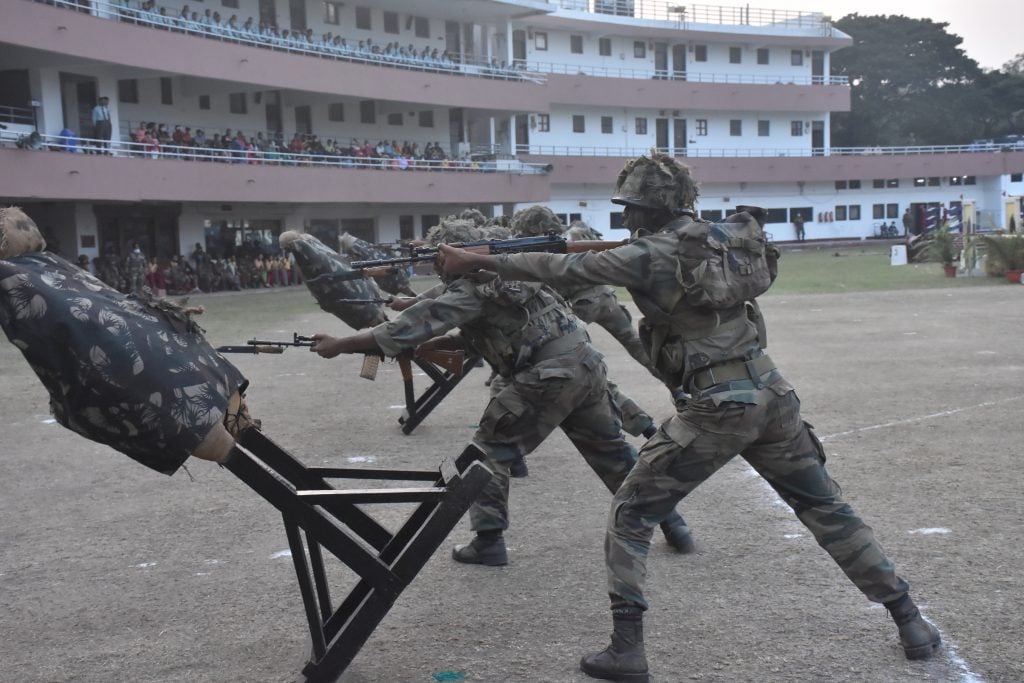
Further he masters his soldierly skills to include Tactics, Weapon Training, Map Reading, Radio Telephony, Field Engineering, Survival, mental robustness and section level tactics in his VI term. As part of sec level tactics, the cadet is trained in operations like ambush, patrolling, attack, defence and casualty evacuation by various realistically simulated exercises in the jungles and hills in and around Khadakwasla which culminates with validating of all sec level tactics in Camp Torna.
To meet the desired training standards a number of new infrastructures have been added in the existing facilities these include construction of a new small arms range, four lane obstacle course, construction of tactical training sheds for outdoor training and establishment of Tactical training Model room at the Army Training Team building complex.
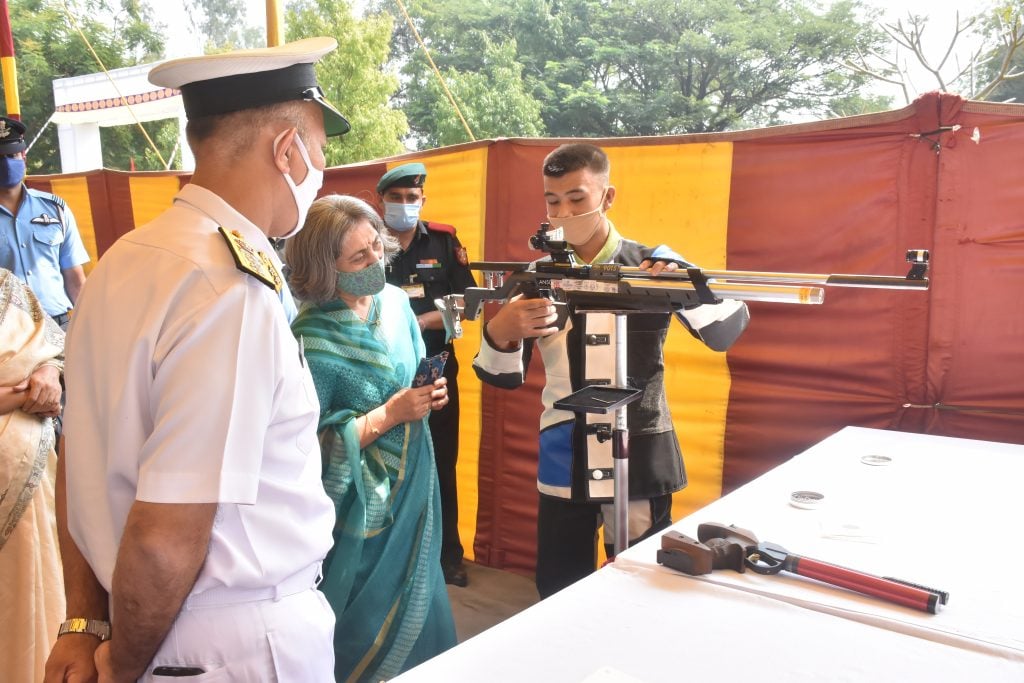
Weapon training and Sports shooting has achieved new zeniths at NDA. The remarkable performance of Academy shooting team was seen in the coveted 9th & 10th Gen JJ Singh Shooting Competitions as NDA Cadets outperformed the professionals of operational commands of Indian Army by sweeping the trophy in consecutive training years 2011-12 and 2012-13.
The cadets also study military campaigns and leadership profiles which facilitate them in acquiring the essence of war from operations in past and further they write book reviews and give innovative presentation which enhances learning lessons for future combats keeping in view the instances of past. Cdts are also exposed to different arms of army by training visits which enhances the concept of REGIMENTATION by seeing the actual functioning of Paltan, the glimpse of which is given by the motivation hall of Army Training Team.
“Guts and Glory” greets you at the entrance of Army Training Team with a statue cluster portraying the Battle of Hajipir, victory against all odds, where the triumphant men fought valiantly.
Naval Training Team
Training is an ever evolving and a continuous process. It has been very aptly said that the more you train in peace, the less you bleed in war. In a future scenario of conflict, where the more educated will indeed be the well armed. Emphasis is laid on all round development of cadets including academics and technical abilities for a service officer. The Naval Training Team (NTT) believes in setting benchmarks in order to produce quality material for the armed forces. NTT continuously strives to prepare the NDA cadet for his future career in the Navy through Specialist Service Training. NTT also endeavours to develop creativity, improve presentation skills, inculcate a flair for Watermanship and encourage research oriented studies amongst cadets through the study of contemporary military topics and naval campaigns.
In pursuance of the aforesaid objectives, NTT lays basic foundation on Navigation, General Seamanship and Communication to V and VI term naval cadets. The team also moulds them to transform as seafarers by providing maritime environment to the extent possible. The training is being imparted in both theoretical instructions in class rooms and practical instructions at NTT and at Watermanship Training Centre (WTC) at Peacock Bay. With a view to inculcate professional reading habits amongst naval cadets they are being tasked to submit book reviews on contemporary naval or military studies along with presentations. In addition to book reviews, a syndicate presentation under the guidance of Naval DS on military and naval war campaigns are also undertaken by the VI term naval cadets. Service training is accorded the topmost priority at NTT. Towards this end, a number of recent initiatives have been taken to ensure imparting of optimal and quality specialist training.
Certain other value additions such as Computer aided packages, navigational simulator, chart trainer, mechanized labour saving devices and various other working and static models have indeed helped the trainer in imparting seamless training with much lesser practical limitations. This has been instrumental in improving the overall quality of training at NTT.
The Watermanship Training Clubs at Peacock Bay are abuzz with water based activities round the year. The aim of these clubs is to impart a spirit of adventure amongst the cadets and to acquaint them with the basics of water sports. Literally carved out of the waters of river Mutha, the facility has been put to optimum use by Peacock Bay and remains the jewel in NDA’s crown of spectacular beauty. It has nurtured the sailing skills of the cadets which unfurled its sails way back in 1955. The Sailing Club boasts of the largest number of Enterprise boats as compared to any other Sailing Club in Asia.
It also holds various national, regional, inter service and club level sailing regattas. NTT has produced many a yachtsmen of international repute like Cmde Mongia, Capt Motiwala, Lt Cdr Tarapore, Lt Ashim Mongia, Capt PK Garg and Cdr Mahesh to name a few, who have brought laurels to the nation. Incidentally, all of them have been bestowed with the Arjuna award, as well. This club introduces the art of sailing and basic nuances of navigation amongst the cadets and grooms talented cadets to reach higher levels. The infrastructure, specialised training and the picturesque settings of Peacock Bay at NDA are ideal for sailing. Yachting, rowing, kayaking, windsurfing and water skiing are actively pursued as a part of club activities.
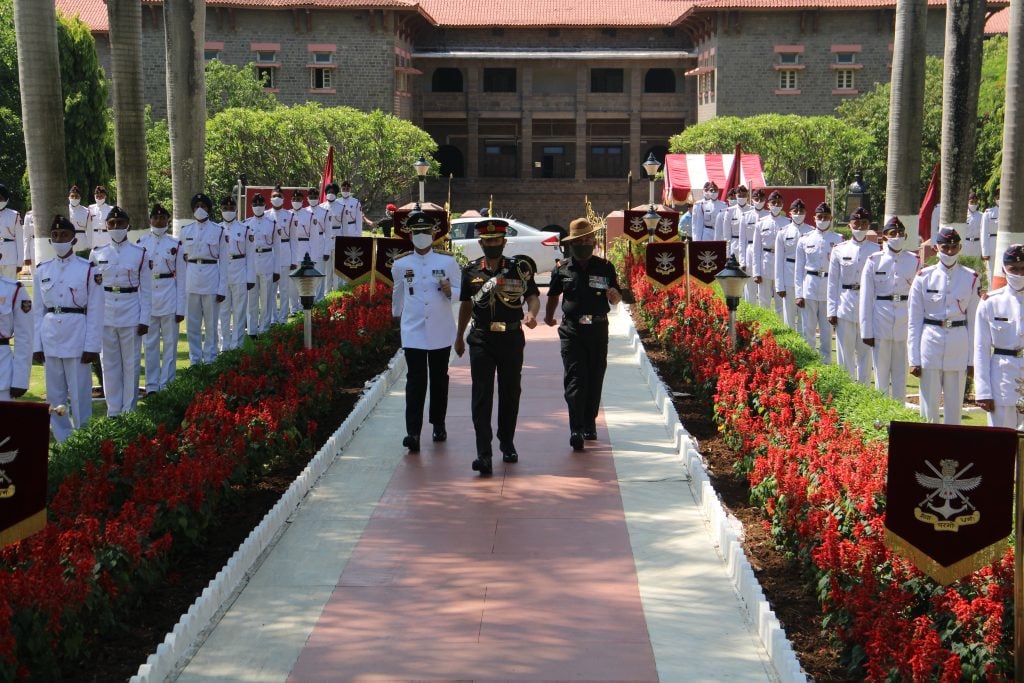
With an endeavour to expose NDA cadets to competitive racing, numerous sailing regattas are conducted by the NTT all through the year. Triangular Sailing Regatta is one such keenly contested sailing regatta between the traditional rivals NDA, Indian Naval Academy (INA) and Naval Engineering College (NEC) cadets. This is a biannual contest staged alternately at NDA and Naval Academy respectively. Late General K. S. Thimayya, DSO, had instituted Thimayya Cup in 1959. Ever since, it has been regularly conducted in Khadakwasla Lake under the aegis of the NDA Sailing Club. The idea of conducting the National Yachting Championship at NDA was mooted in the early 1980s. These National Championships have contributed enormously towards enhancing the popularity of this sport and generating an increasing interest amongst the youth of the nation.
An overall (versatile-rounded) personality is the need of the hour in the armed forces. It is a challenge to keep pace with the rapidly changing technology, which needs to be taken head on to achieve success in the battlefield of tomorrow. The Naval Training Team continues in its endeavour to provide the best finished product for the Navy, which remains a pride for this premier tri-service training establishment.

Training Ship Ronnie Perriera is a scaled model of a ship, designed to help naval cadets get a feel of life at sea, by creating a naval ambience. The ship with a full-fledged bridge, an operations room and even a helo deck has actual equipment from decommissioned ships to provide a nautical environment for the budding future naval officers. This stone frigate was inaugurated by the Commandant, National Defence Academy on the 16 Jan 2006 and named as “Training Ship Ronnie Perriera” in honor of the late Admiral R L Perreira, who having served as the Deputy Commandant of the NDA later rose on to become the Chief of the Naval Staff.
Air Force Training Team
Nestled in the Eastern corner of the vast estate of the Academy is the ‘Glider-Drome’ – the business end of activities at the Air Force Training Team (AFTT). The genesis of team can be traced to a need for more aware and better trained aircrew – a need, brought about with the advent of Jet age in the IAF. From modest beginnings of a rough strip and winch launched gliders, the team has come a long way and today, boasts of a metal runway 950m long and state-of-the art powered sailplanes.
Construction of AFTT complex started in 1954 and was taken charge of in Oct 1956, by Sqn Ldr DG Kinglee, the first Officer-In-Charge (OIC). The hangar, administrative building, instructors rooms and the glider drome was completed by 1957. The present accommodation of the team is modern and contemporary with computer enabled classroom, PC based flight simulators, metalled runway, Air Traffic Control, servicing facilities for the aircraft and other administrative facilities.
The Air Force Cadets begin their association with AFTT in the Vth term when they start learning aviation related subjects prior to their flying training in the VIth semester. The training team aims at inculcating aviation sense in the budding air warriors and groom them in all aspects related to military aviation.
The team commenced training with Sedberg T21B gliders with the first launch on 14 Sep 1957. The historic flight was piloted by Sqn Ldr DG Kinglee and Flt Lt G Singh. In succession the team flew the Eon Baby (First Flight 19 Nov 57), Eon Olympia (First Flight 06 Feb 60), Rohini (First Flight 14 May 68) and Ardhara (First Flight 08 Oct 86). Since Sep 2000, the mount of the team has been the Austrian built Super Dimona HK 36 TC aircraft. The team has ten such aircraft.
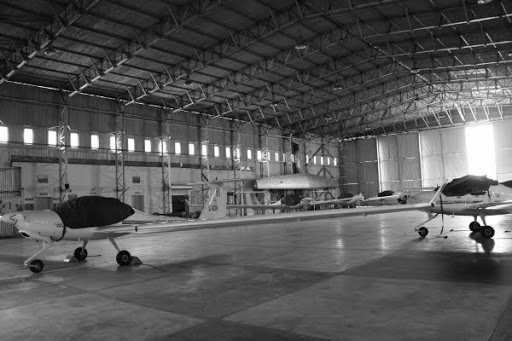
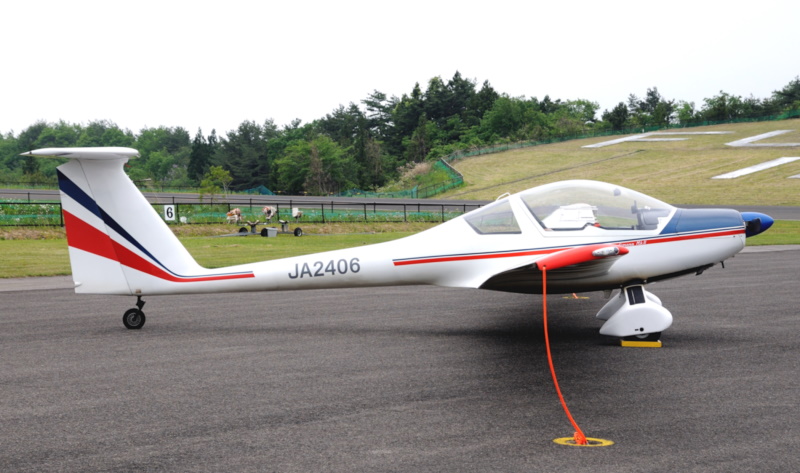
The graceful Super Dimona is used to initiate the VIth term Air Force cadets to powered flight. Attention is given to all aspects of flying training to enable the cadets to be in line with Air Force ethos prevalent in the flying training establishments/units in the IAF. The trainees fly 10 sorties as a part of their syllabus. The exposure to flying on Super Dimona HK 36 TC aircraft has made sure that most of our cadets are able to earn their coveted ‘Wings’ (brevets) at Air Force Academy.
The ground training syllabus for Air Force cadets has been revised with a substantial increase in service specific training. Service specific training is imparted in the final year of cadets’ stay at NDA. The grades in these subjects contribute towards graduation credits. Before taking to the skies, the budding aviators are thoroughly familiarized with their machine. This gives them an insight to the working of the aircraft systems.
In consonance with ‘jointmanship’ ethos of NDA, AFTT organizes visits of Air Force as well as the Army and Naval cadets to various IAF establishments. While these visits provide an insight to the Air Force cadets about their future service, it exposes their counterparts from the other two services to the capabilities of IAF.
The Air Traffic Control facility is a modern complex which houses radiotelephony simulators and aero-sports clubrooms. It also houses an Automatic Weather Station for collection of weather data.
Flying Milestones/Records of AFTT
| Type of Glider | Crew (Date) | Duration | Height; Significance |
| Sedberg T21B | Flt Lt G Singh Cdt Nair (17 Mar 58) | 2:40 hrs | 11,500 feet; maximum height on a glider. |
| Eon Olympia | Flt Lt Mohsinho (29 Mar 61) | 5:35 hrs | 9,000 feet; maximum duration flight. |
| Eon Baby | Flt Lt Bhatia (06 Mar 68) | 2:25hrs | Maximum duration by Eon Baby. |
| Sedberg T21B | Flt Lt Bhatia Cdt Johar (08 Mar 68) | 3:27hrs | Maximum duration by Sedberg T21B. |
| Ardhra | Sqn Ldr KA Kumar Sqn Ldr KK Singh | 1:00 hr | Maximum duration by Ardhra. |
Arjan motivation hall is an added feather in cap for AFTT. A motivation hall to showcase old and new ac of the IAF. History of Commands, movie on IAF and mementos from various dignitaries & courses has been erected. A scaled model of the Pilatus PC 7 Mk II ac which the cdts are expected to fly at AFA in their stage I trg has been erected at the entrance of the Motivation Hall.
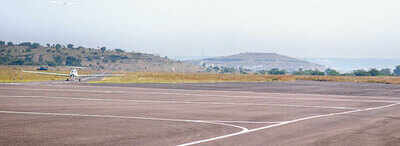
A new hangar has been constructed to accommodate the five new Super Dimona Aircraft inducted in Dec 13. A major improvement in the infrastructure is underway at AFTT. The runway is widened to 100’ and extended to 4500’ from earlier dimensions of 50’X 3000’. A new classroom, changing room & briefing room has been constructed while the cadets have a lounge to rest, recoup and refresh during training. No wonder with his bags full of such a professional trg the Ex –NDA shines during subsequent stage of trg and professional career.
Joint Training Team
IN SEARCH OF JOINTMANSHIP
“The victory in World War II was a triumph for the concept of the complete integration of the three dimensions of war – ground, sea and air, and, the great lesson for the future is the success depends on a complete integration of the Services.” (General Douglas MacArthur)
In the post-Kargil scenario, the Kargil Review Committee (KRC) endorsed a scathing indictment of the lack of jointness in our Armed Forces wings. The criticality of jointmanship to national security was finally acknowledged and interlinked. NDA took lead in implementing the recommendation of KRC in letter and spirit. As a result, Joint Training Team was set up in Autumn Term 2007.
Joint training at the National Defence Academy focuses on inter-service cooperation for synchronization of all components of military power to achieve a common military aim. It is characterised by trust and confidence, mutual respect for each other’s capability and healthy competition.
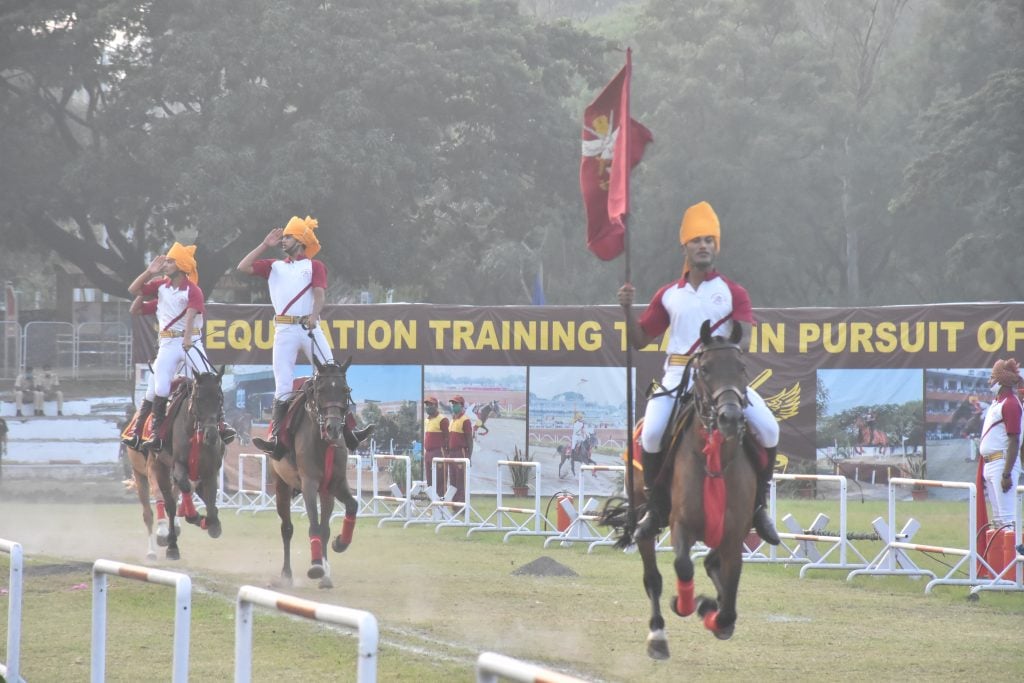
A cadet is welcomed in NDA by JTT through the ‘Orientation Capsule’ of approximately 60 days duration. During the capsule, he is mentally conditioned and physically toughened up to expeditiously adapt to the military way of life. Scientific means are used to condition the body of the cadet in a gradual manner starting with walking/ light jogging and thereafter graduating to upper body exercises, swimming, running and drill etc. During the capsule, all cadets are introduced to the basic nuances of swimmimg. Mess and social etiquette are taught and strengthened through Dinner and Guest nights.
The common aspects of the three services are covered in the curriculum of joint training. This includes weapon handling, map reading, military law, history and organisation of each service and analysis of military campaigns and operations.
The leadership qualities and personality of a cadet is developed through interactive classroom instructions, debates, public speaking competitions, seminars and interactions with civil institutes and organizations.
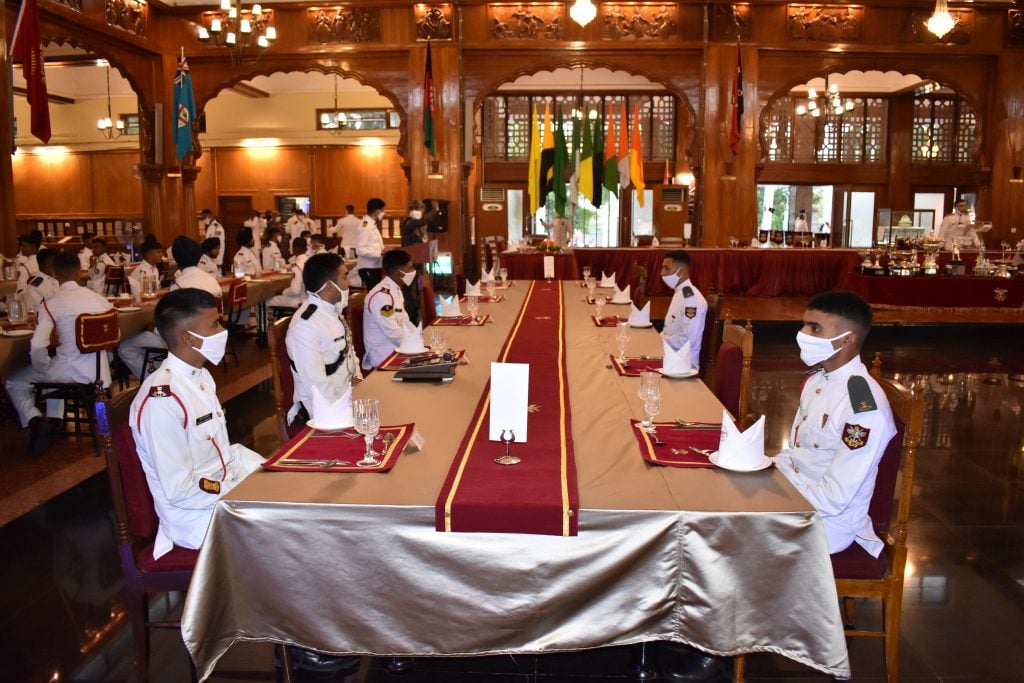
A cadet, after completion of the training at NDA, is apprehensive of the new challenges that his life in the Finishing Academy beholds for him. The Finishing School Capsule facilitates a smooth transformation of a cadet into an officer by exposing him to the finer aspects of life as an officer and a military leader.
JTT is involved with the grooming of a cadet from the first day till the penultimate day of this training. Ever since inception, efforts have been made to consistently improve him. JTT stands committed toward achieving higher standards of joint training and grooming the future military commanders of the Indian Armed Forces who are fully capable of taking on the higher responsibilities in a joint warfare scenario.
You can prepare for defence entrance exams such as NDA, AFCAT, INET, and CDS by taking Written Online courses as they will not only give you access to full-length quality lectures but will also provide the facility to take standardized mock tests for better study and strategic growth in the exam. You can take multiple quizzes after each lesson to ensure the full understanding of the subject along with creating your customized lesson plans. You can check out the course content along with other important specifics at SSBCrack exams.
You can also access them through the SSBCrack Exams app available in the google play store.
Jai Hind
How to prepare for the NDA Exam?
- Take the best NDA Exam Online Course by SSBCrackExams.
- Take the NDA Exam Mock Test Series to boost your prep.
- To Crack SSB Interview ENROLL NOW: SSB INTERVIEW ONLINE COURSE


